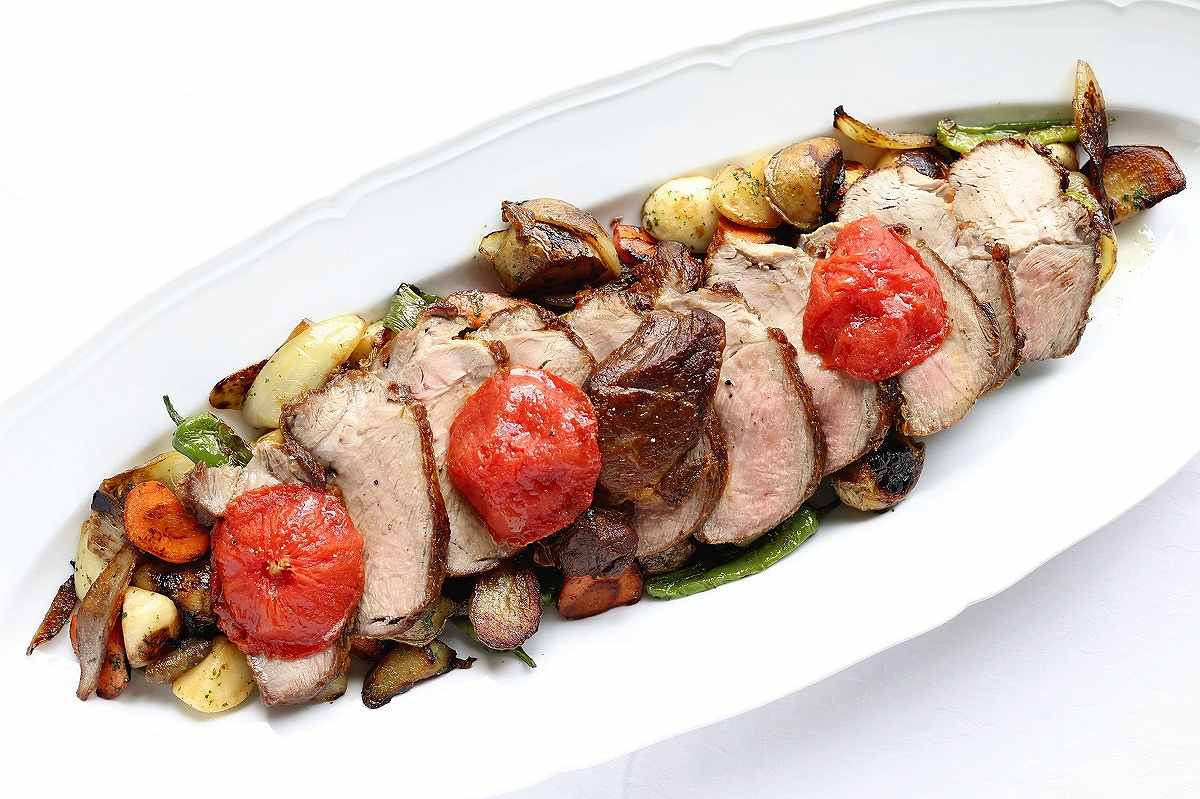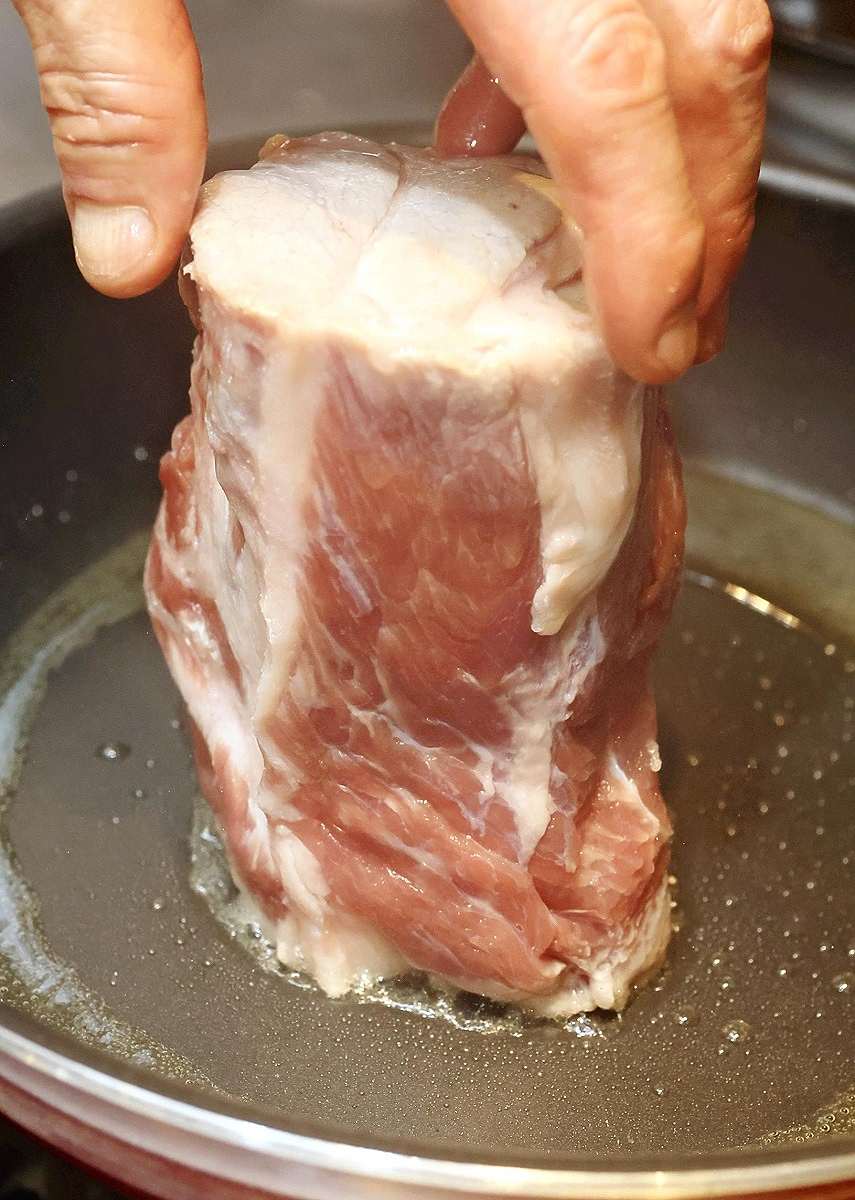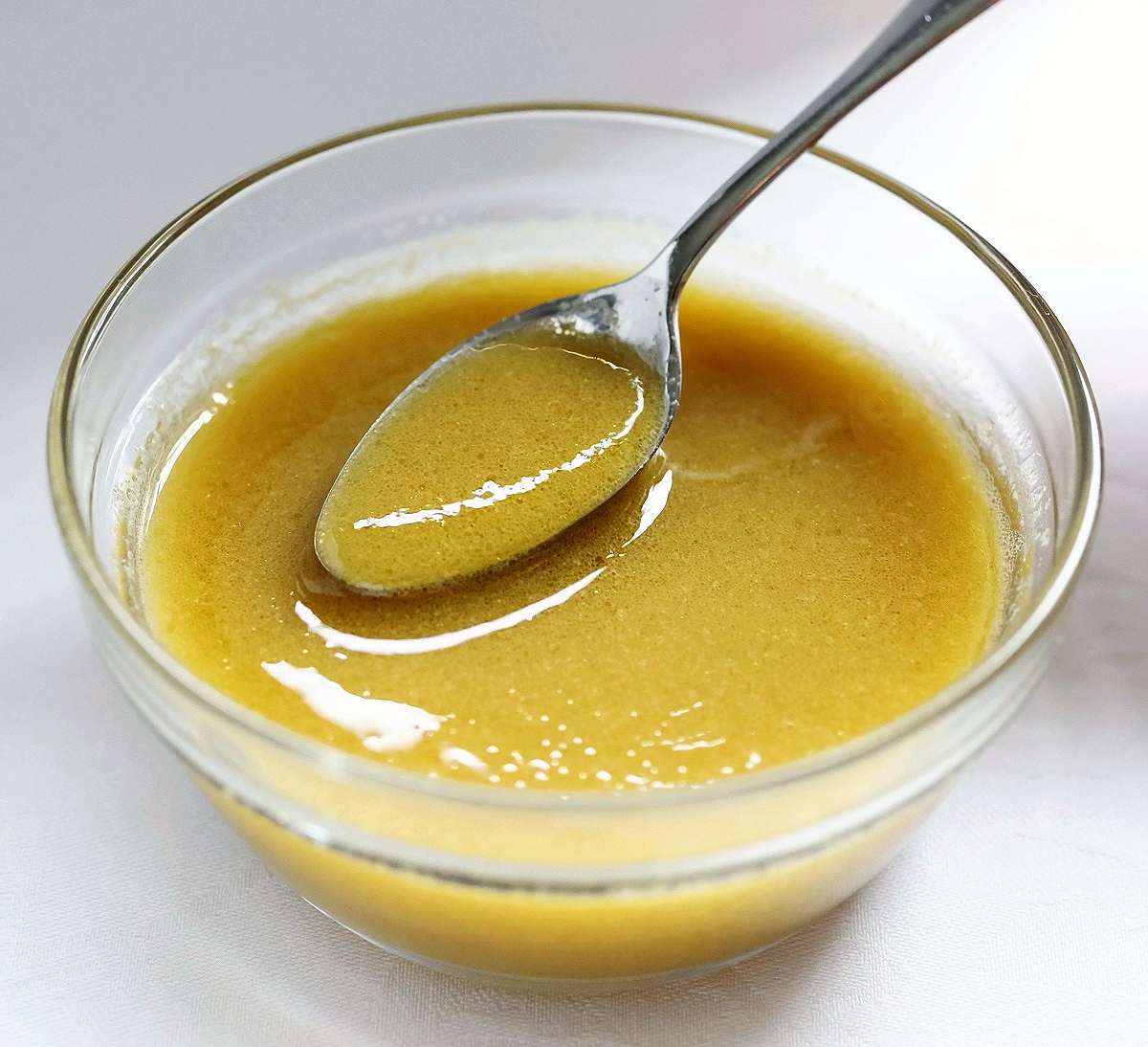The Weather Is Heating Up, and It’s the Perfect Time for Piping Hot Roast Pork, the Recipe Featured In this Edition of Delicious

Pan-fried pork shoulder
11:30 JST, June 9, 2024
It’s that season again, when spending time outside becomes a pleasant experience. French chef Noboru Tani introduces pan-fried pork shoulder cooked slowly in a frying pan and served with barbecue-style seasonal vegetables.
A hearty piece of roasted meat is the perfect outdoor meal, and pork is such a versatile ingredient.
“You should choose nothing but the shoulder if you want to enjoy the umami of pork,” Tani said.
This lean part of the meat is covered with a mesh of fat and has various textures in a single hunk. Simply roasting or grilling it produces a deep flavor.
The key for avoiding either overcooked or undercooked pork shoulder is the cooking time, and Tani says “sound” is the clue.
When you hear a dry sizzling sound, the pork is cooked just right. If you hear nothing or a subtle hissing sound, the temperature is too low. You’ll also hear nothing if the temperature is too high, so listen carefully and adjust the heat accordingly, he said.
Once browned, the pork needs to undergo a process called “arroser” in French, in which the meat’s surface is basted with melted fat to prevent it from drying out and to restore the umami that has oozed out.
“This step makes me want to tell the meat, ‘I hope you’ll become yummy,’” he said.
A metal skewer should then be inserted into the center of the meat. If the skewer is warm when removed, it’s cooked. When it’s done, the meat will spring up when you press on it lightly with a spatula.
The pork should be rested for 30 minutes after it’s cooked to lock in the juices. It’ll be crispy on the outside and tender on the inside. Each bite will contain a condensed savory flavor. The roasted vegetables bring their own sweetness and texture.
“If you think it’s not cooked through, cook it again. It’s OK to be flexible,” he said, adding that what’s important is to “have a desire to eat something delicious.”
Pan-fried pork shoulder
Ingredients:
About 500 gram pork shoulder
5 or 6 garlic cloves
For the dressing
40 milliliter wine vinegar (red, white or sherry vinegar)
120 milliliter olive oil or salad oil
For the side
Vegetables such as early-harvest potatoes, spring carrots, turnips, onions, tomatoes, for example.
Directions:
1. Rub 6 grams salt all over the meat. Wrap the meat in plastic wrap and refrigerate overnight.
2. Take out of the refrigerator and leave for 2-3 hours, bringing to room temperature. Pierce garlic cloves in several places, leaving the skin on.
3. Add 2 tablespoons of olive oil to a frying pan. Brown the meat. Add garlic.

Browning the meat in olive oil
4. Move the meat to the edge of the pan to cook for about 30 minutes. Tilt the pan as needed to slide the oil under the meat. When the meat is browned, cover the surface repeatedly with melted fat using a spoon.
5. Turn off the heat. Place the meat on a cooking tray and leave for 30 minutes.
6. Cook the vegetables of your choice in a pan with olive oil, season with salt and sprinkle with chopped parsley. Cut tomatoes in half lengthwise and roast them in the oven at 150 C until the surface is charred. Remove skins.
7. To make the dressing, mix vinegar with 3 grams of salt, add oil little by little and mix. Cut the vegetables and meat and arrange on a plate. Pour the dressing over everything.
Mustard adds richness

Mustard dressing
If you add mustard to the dressing, it’ll taste richer. Put 20 grams of plain mustard and 3 grams of salt in a bowl and add 40 milliliters of vinegar to mix. Add just a little vinegar at first to dilute the mustard and the rest when the mustard becomes smooth. Then add 120 milliliters of oil a little at a time and sprinkle pepper to taste.
The dressing is good for salads, too. Toss the vegetables with the dressing in a bowl before serving.
"Features" POPULAR ARTICLE
-

Sanrio to Open Museum in Yamanashi Pref. Dedicated to Founder, Exhibits Include Hello Kitty, Other Characters
-

Autumn Foliage Surrounds Visitors to Tokyo’s Showa Kinen Park
-

My Daughter No Longer Speaks to Me, But I Want to See Her and My Grandchild
-

Kumamoto: Public Bath Refurbished as Library Where You Can Chat, Take Photos
-

Frozen Vegetables: Demand Rises for Convenient, Tasty Domestic Produce
JN ACCESS RANKING
-

Tokyo Economic Security Forum to Hold Inaugural Meeting Amid Tense Global Environment
-

Keidanren Chairman Yoshinobu Tsutsui Visits Kashiwazaki-Kariwa Nuclear Power Plant; Inspects New Emergency Safety System
-

Imports of Rare Earths from China Facing Delays, May Be Caused by Deterioration of Japan-China Relations
-

University of Tokyo Professor Discusses Japanese Economic Security in Interview Ahead of Forum
-

Japan Pulls out of Vietnam Nuclear Project, Complicating Hanoi’s Power Plans
























